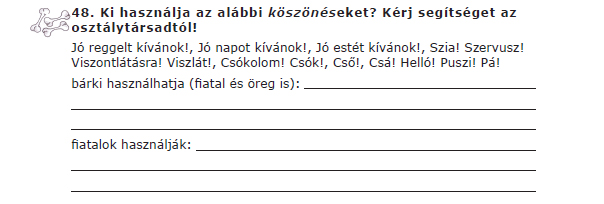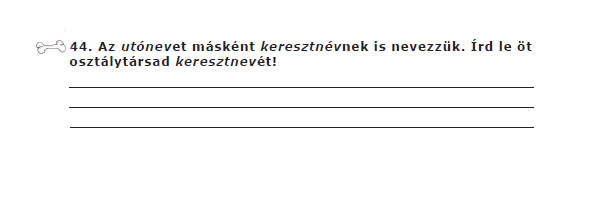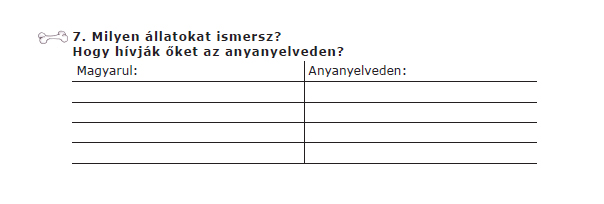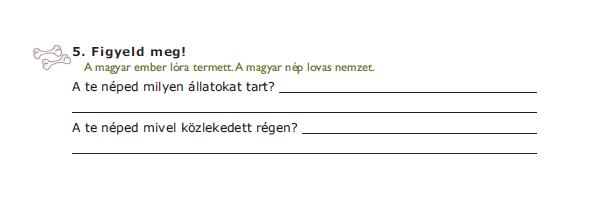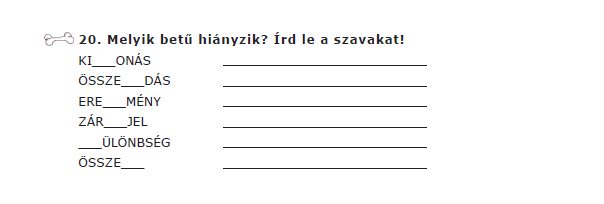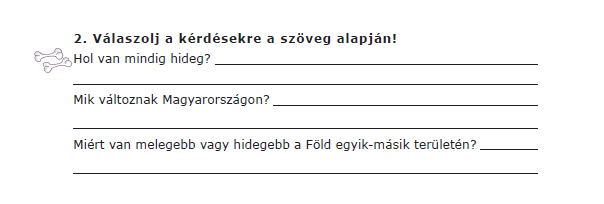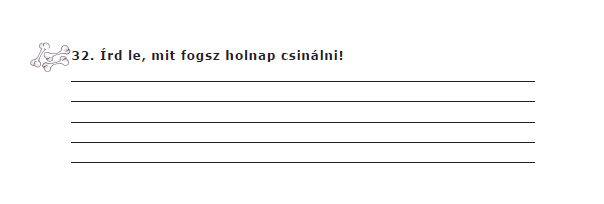The StepTogether program in brief
The main purpose of the StepTogether program is to develop L2 Hungarian competencies of migrant students attending Hungarian public education with a view of successful teaching and learning in integrated classes and becoming able “to step together” with their peers.
The short-term goal of the program is to support migrant students’ academic progress and to avoid their dropping out, the long-term goal is to facilitate their admission to secondary schools. The program offers support for teachers working with migrant students.
The closer target groups of the StepTogether program are migrant students aged between 8 and 14 with literacy skills, who are non-native speakers of Hungarian, and the subject teachers of these migrant students. The broader target groups are the migrant children’s families and their non-native Hungarian-speaking peers, in and outside the school. The L2 Hungarian competencies of these groups are improved indirectly.
Complying with EU and Hungarian regulations migrant children attend public education in integrated classrooms. The program reflects on an issue linked to the integration process: migrant students enter public education by their age group, irrespective of their competencies in L2 Hungarian. Thus in the senior classes of the primary school migrant children have to cope with their disadvantage of language competencies and improve their academic skills at the same time. For this task, in Hungary no support and materials were available for migrant students and their teachers prior to the StepTogether program.
In the StepTogether program we have undertaken to work out CLIL-based L2 Hungarian learning aids in the spirit of the following key concepts:
CLIL-based
„Content and Language Integrated Learning (CLIL) is a dual-focused educational approach in which an additional language is used for the learning and teaching of both content and language.” (Coyle–Hood–Marsh 2010). In CLIL classrooms acquisition of language and (academic) content happens simultaneously in the teaching-learning process. The Hungarian National Curriculum and the frame curricula build on it, provide the content base of the StepTogether learning aids. The approach of the StepTogether materials is language-driven, because the main aim of them is to develop L2 Hungarian competence.
L2 Hungarian
According to structured interviews with migrant students and their teachers taken before starting the StepTogether program, there are two main goals of the integration process of migrant children: to acquire language competencies and content knowledge. The primary goal of the StepTogether materials is to assist the growth of L2 Hungarian competence of migrant children.
Learning aids
StepTogether materials are classified as „learning aids”, because they can be used simultaneously with any of the textbooks approved for use in Hungarian public education. Learning aids increase the effectiveness of the teachers’ work, because on the one hand they contain all the curriculum topics treated in the classroom during the school year, on the other hand they fit the migrant students’ proficiency level in Hungarian. Learning aids are principally intended for classroom use, but during the pilot periods, they were tested not only in classroom use applying differentiated instruction and assessment, but also in developmental and L2 Hungarian classes. One of the learning aids’ novelties is that subject teachers without teacher of L2 Hungarian qualification can use them.
Migrant children
The meaning of the word migrant in a wider sense is ‘one who moves from one place to another’, but in the StepTogether program we use it in a narrower sense: ‘one, who’s country of origin is not a member state of the European Union, who is a so-called third-country national (TCN)’. Using the narrower sense also refers to a heterogeneous group, because the legal status of an immigrant person can be very diverse (long-term resident, refugee, protected person etc.).
How do we think about integration?
We should examine the integration process of migrant children from different points of view.
(1.) In the process of teaching and learning, integration first means involving migrant students in the classroom community. Integration is not easy for migrant students, whose mother tongue and cultural background is different from the mainstream. Hard work is needed from the migrant student, from the classmates and from the teacher until the migrant student feels a sense of belonging and s/he becomes a part of the community. In the learning aids there are exercises facilitating communication and cooperation with the classmates directly or indirectly.
In the exercises for getting in touch directly, migrant student has to ask for his/her classmates’ help.
In the exercises for getting in touch indirectly, migrant student does not have to ask for help, but s/he has to make contact with his or her classmates when doing the exercise.
(2.) Our aim is to assist the process of integration also in a wider circle. The exercises of the learning aids convey European and Hungarian values, give information about the European Union and Hungary. This interpretation of integration is concordant with the accentuated developmental task in the National Curriculum: conveying Hungarian and European heritage. There are exercises in the learning aids providing information about Hungary and the European Union.
We have chosen the illustrations and photos of the learning aids from the viewpoint of Hungarian and European values. The main character of the StepTogether materials is Kócos, the mischief-maker Hungarian shepherd dog, who often mixes up words, numbers, and things. Puli is a lovely Hungarian symbol, he drives students in the winding paths of Hungarian language and makes the graphics of the learning aids coherent.
On the photos of the learning aids, we can find animals, plants, and landscapes indigenous to Hungary and Europe, the visual input from photos and graphics helps migrant students to interpret tasks, and understand language.
(3.) Migrant students arrive form one of the third countries, the language and culture of which is just as important to retain, as to acquire Hungarian language. High-level competency in mother tongue helps to acquire a second language (Hungarian in this case), and ensures a sound basis for bilingualism. Retaining migrant students’ own culture is a good reason for building class community, opens the door for Hungarian classmates to get information from the culture and language of migrant students, thus to become more receptive and acceptive towards other cultures. This aspect of integration is supported in the learning aids by exercises, where migrant students have to use their mother tongue.
Checking answers in these exercises cannot be the responsibility of the teacher, nevertheless we think, that these exercises help to retain mother tongue and to obtain academic knowledge.
There are exercises that ask for information about the own language, culture or heritage of the migrant student, connected with the topic treated in the subject lesson. These exercises open the door to involvement of family members and friends to schoolwork that would affect positively the integration process of them as well.
On what language proficiency levels learning aids can be used?
Learning aids are meant for students, who are familiar with the Roman alphabet, can read and write. Developing L2 Hungarian proficiency of migrant students is effective, when using differentiated instruction and assessment, because these students’ proficiency in Hungarian can be very different. The exercises of the learning aids are developed for A1, A2, and B1 language proficiency levels, described in the CEFR (Common European Frame of Reference)
Learning aids include essential information about the sound and writing system of Hungarian (e.g. the Hungarian alphabet, phonetic exercises, names of numbers etc.), but we do not recommend them for students with A0 proficiency in Hungarian. The levelling of the exercises (A1, A2, and B1) in grammatical issues follows the practice of textbooks in L2 Hungarian, and StepTogether Matrix of Grammar and Syntax contains detailed description and levelling of Hungarian grammar.
The authors of the learning aids have worked up the levelling guidelines for the terminology of school subjects.
At A1 level, we can find key topic words and words that are simple by their structure (not compounds and contain no more than one derivative affix). A1 lexical items occur with colligation patterns levelled as A1 grammar topic, and they are used in everyday language as well (e.g. jel ‘sign’; állat ‘animal’; nyelv ‘language, tongue’).
At A2 level, we can find words that assist deeper understanding of the topic. By their structure, they can be simple words, compounds, or derivatives. A2 lexical items occur with colligation patterns levelled as A2 grammar topic. A2 words usually occur in everyday language as well, but the meaning of them as a special term is often differs from the one in daily use (e.g. jelrendszer ‘sign system’; háziállat ‘domestic animal’; mérőszám ‘index-number’).
At B1 level, we can find words that are necessary for a deep level of understanding and the accurate acquisition of the topic. Many of them represent abstract concepts that are not easy to explain and understand (e.g. stílus ‘style’, eposz ‘epic’). B1 lexical items can be very diverse by their structure (e.g. halhatatlan ‘immortal’, cseppkőbarlang ‘limestone cave’, egyenesszög ‘straight angle’). Most of these terms are not used in everyday language.
Language proficiency levels are marked for the students with the bones of Kócos. The number of bones helps the students to choose exercises that suit the best their proficiency in Hungarian.
Developmental goals and types of tasks at A1, A2, and B1 levels
At A1 level, students have few exercises that require independent writing. They have to underline words, to complete words with letters or to put sentences of a story in chronological order. On this level, coupling pictures and words, drawing the meaning of a word are common exercises. By the experience of teachers working with migrant students, students with A1 proficiency in Hungarian have difficulties with handwriting. This was the reason we tried to create exercises that provide students with the sense of achievement, and open the door to show their knowledge about the topic in hand. Moreover, improving handwriting is extremely important at A1 level, many exercises serve this purpose in the learning aids, e.g. copying or completing words and phrases.
At A2 level, the amount of written exercises arises. Students can practice inflexion and syntactic constructions on the base of a given pattern. On this level, students find more texts to read about the topic.
At B1 level, students have to construct sentences and to write shorter texts by themselves. Sentence building exercises are frequent at this level and in some exercises, students are asked to create short texts on a given topic.
Levelling of the exercises helps the teacher to follow the migrant students’ Hungarian language development. The L2 Hungarian proficiency of migrant students develops very fast in the Hungarian-speaking environment, but writing, reading, reading comprehension, and academic oral communication fall behind their conversational skills in Hungarian.
Leveling of the exercises helps students to choose tasks that fit the best their language skills in Hungarian.




